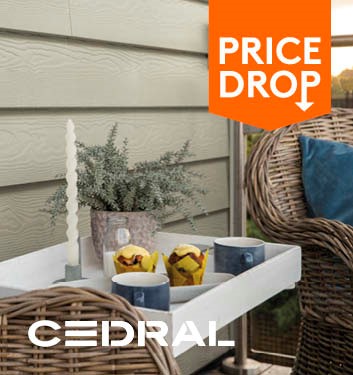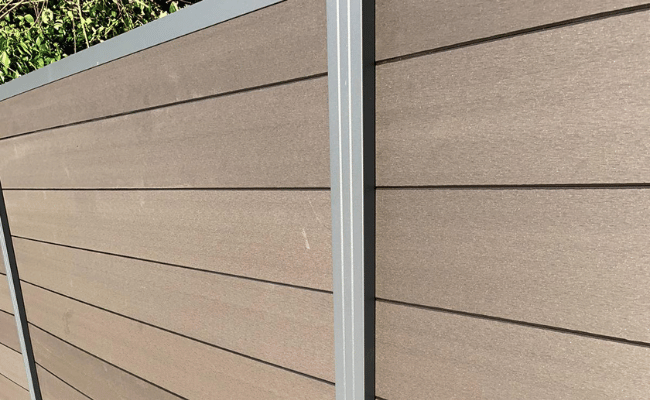How much does a fence cost? – Composite vs Wooden
When looking to replace your fence you will most likely be looking closely at the upfront cost, the price of materials and to a lesser extent installation cost, but many people don’t even think of the long-term costs associated with wooden fences.
While composite fencing does come with a higher upfront cost than most standard wood fences, the associated costs over the lifetime of the fence can make your wooden fence a lot dearer in the long run, with staining/painting being a yearly expense and repairs/replacements can be an unexpected and unwelcome bill.
Wooden fences can also vary wildly on price depending on the type of fencing you opt for. Be it a basic panel fence or an elaborate decorative fence, wooden fencing can come in up to 50% cheaper than composites but cheaper is not always better.
Installing composite fencing
Installing a composite fence is not much different from a wooden fence, the main thing to keep in mind is the spacing of your posts and how you are fixing these, either using a post base onto a concrete floor or buried and concreted in. Once your posts are in at the required distance it is as simple as slotting your trims and planks into place
Installation costs (if not doing it yourself) for composite fencing can be a bit pricier than wooden fences, the average cost for installing composite is £12-£42 per ft whereas a wooden fence you would be looking at £8-£20 per foot, these costs vary quite a bit based on what type of fence it is and geographical location so don’t take these numbers as gospel.
Which type of fence looks the best?
Composite fencing has a modern look which is UV resistant, meaning the colour of your fence will have only very minimal fading over time and will still look great in years to come without the hassle of painting or staining. Composite fencing comes in a variety of colours too, so you are sure to find a colour to suit your garden.
Wooden fences give a more natural traditional look to your garden and can be painted to a variety of colours, but after a year or two your fence may start to look tired. While you may upkeep it to look good on the inside of your garden many people don’t think about the outside of the fence, especially if it borders a path and may not be as aesthetically pleasing for the perimeter of your property.
Maintaining your fence
Comparing the maintenance of wood and composite fencing brings up several factors that most people don’t even consider when looking for a fence.
Wood fences are a natural product that if unmaintained can deteriorate over time, to stop or at least delay this as long as possible, frequent treatments must be made to the fence to extend its operational lifetime.
Staining the fence helps to protect the fence from long term damage from the elements (moisture & UV rays) painting your fence does the same but to a lesser extent and helps stop the wood rotting or fungus/mould growth.
Composite fencing on the other hand is virtually maintenance free, needing only an occasional wash down with water, it is UV resistant & not susceptible to rotting or mould. The aluminium posts also will not warp or rot unlike wooden posts and are a lot more aesthetically pleasing to look at than concrete posts.
Also, with the lack of staining/painting a composite fence will be kinder to your garden as there is no fumes or runoff of chemicals into the soil if you accidently spill anything while doing your yearly maintenance on a wooden fence.
Conclusion – Composite or Wooden fencing?
After going through the benefits and pitfalls of both systems we believe composite fencing is the smart choice that many households will make when looking to replace their fence, understanding that paying more up front initially will benefit them in the long run due to no recurring labour and costs due to maintenance and having a wonderful looking fence for many years.


